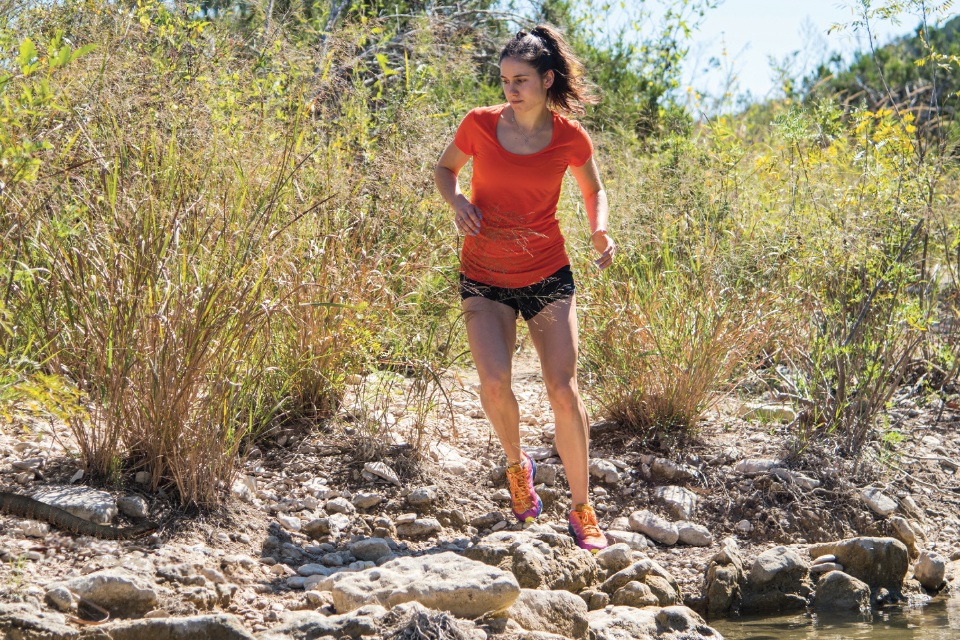Snake Safety

It's a warm sunny day and you are halfway through a 12-mile run in the greenbelt, feeling stronger than you ever have before. Bushes and branches cower before you as you leap across puddles and over downed trees. You start thinking that you should go ahead and sign up for that 10K trail run challenge after all. Then suddenly, as if seeking retribution, a stick lunges at your calf and SNAP!
Just before you collapse in pain, you notice this unusually agile stick has one end shaped like the head of a lance, has scales, and has fangs. You’ve just been bitten by a North American pit viper.
Your better-than-before trail run is over, but life as an athlete doesn’t need to be. Just remember three things and everything will turn out alright: Don’t panic, don’t try to seek revenge, and don’t move.
What Kind of Pit Viper? It isn’t so important what kind of pit viper has bitten you, but for the sake of discussion, we will choose the one with the reputation of being the most ill-mannered; the pugnacious water moccasin. There are four basic varieties of venomous snakes with various distribution patterns in North America. In Texas, we are home to all four. Three of these fall into the pit viper family and are commonly known as rattlesnakes, copperheads, and cottonmouths (aka water moccasins). All three inject venom through fangs that has a digestive effect on body tissues. The fourth is a coral snake, which is much rarer and possesses a neurotoxic venom.
1. Don’t panic: You’re not going to die. Each year in the U.S. approximately 8,000 venomous snakebites are reported (at least 95 percent of these from pit vipers) and out of these, about five people die. That is less than one in 1,000. This is not to say that a snakebite is harmless, however.
First, brace yourself, because it’s going to hurt! No need to sit and ponder the statistics on mortality, because you’ll know within seconds from the intense pain and immediate swelling that something needs to be done. Approximately 98 percent of bites occur in an arm or a leg, and in medicine, we place a high value on preserving life and limb. In this case, the threat to limb is very real and can include the possibility of amputation if not treated promptly at a hospital equipped with antivenin.
2. Don’t seek revenge: In pre-hospital medicine, we stress the need to make the scene safe above all else. In this case that means letting the snake get away. Precise identification of the snake is not necessary for the hospital or EMS to treat you. The antivenin for all three pit vipers in the U.S.—including rattlesnakes, copperheads, and water moccasins (aka: cottonmouths) is the same, and as I’ve already mentioned, it will be painfully obvious if you’ve been bitten by one of these three.
3. Don’t move: Assuming the snake has escaped and that you’re not in imminent danger, then stay put. Moving around on a bitten extremity can cause the spread of venom and potentially cause damage to central organs. If you have a cellphone, call 911. If you must send someone for help, just make sure they know exactly where you are, know your age and what happened to you, and let them know that the first two rules apply to them also.
If you are far from help, without a working phone and little to no chance that someone will happen by, then you might consider easing yourself toward somewhere that they might.
4. Treatment: So far this has been a lot of don’ts, and for good reason. There is very little you can do to treat a snakebite in the field. There is just no magic bullet for this. Actually there is, in the form of a very effective antivenin, but it is only available in the hospital.
Here are a few dos:
1. Try to keep the bitten extremity below the level of the heart. This may help prevent the spread of the venom to more critical areas.
2. You can begin marking the area of swelling on your arm or leg with the time using a pen or a marker. This will help medical professionals later.
3. If you are able to splint the extremity, this may help slow the spread of venom. However, doing this with what equipment and remaining extremities you have on hand is much easier said than done.
With that in mind, here are some more don’ts:
Do not cut, suck, or try to extract venom from the bite. It won’t work. Do not apply ice. Do not apply tourniquets or constricting bands. Do not apply electrical shock therapy. Above all, do not get drunk. Any of these old traditional treatments have been shown to be ineffective at best and harmful at worst, and getting drunk simply makes these old traditional treatments seem like a good idea.
Oh and one more: Don’t sign up for that 10K trail race—this may take awhile to recover from. With clear decision-making and timely evacuation to a hospital, however, you can hope to run that race in the future.






